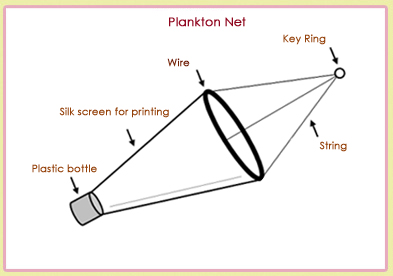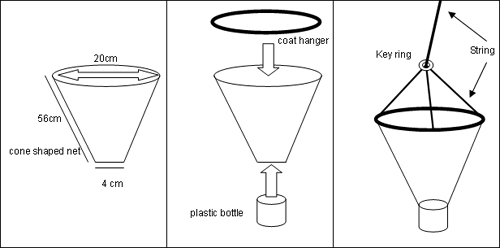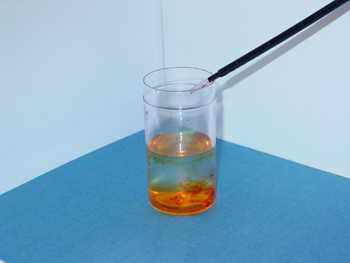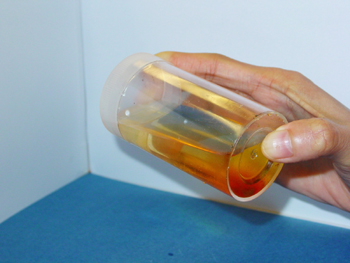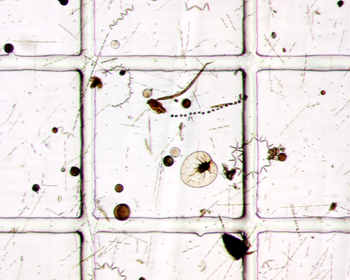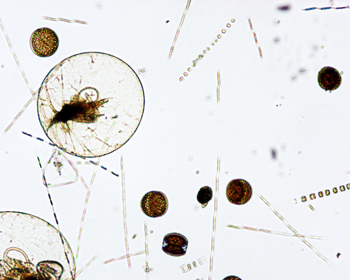Activity
|
Actitity 1 - Sampling and Observing Plankton Objective: This activity shows you how to collect plankton sample including the making of a plankton net, and observe the plankton under microscope. Materials: - compound microscope Step 1 – Plankton Net Making Plankton are very small organisms that can be found in all water bodies. However, they are very difficult to be observed if a plankton specimen is not concentrated. Plankton net is a device used for concentrating plankton for closer examination. The following instructions will show you how to make a simple plankton net (Fig.1) by using common household items.
Materials: Net Assembly
3. Sew the wider end of the cone to the circle wire by using thread and needle. Caution: Before sewing on the net to the circle, fold the edge of the net several times. This is to prevent leaking of plankton specimen from the seam of the net. 4. Use string or rubber band to attach the plastic bottle tightly to the lower end of the net. 5. Cut three pieces of string (about 20cm) and tie them to the mouth of the net in the shape of a pyramid. Tie the other end of the string to the key ring. 6. Attach a longer towing string or rope to the key ring.
Step 2 – Plankton Sampling Warning! Sampling should be performed in an area where the water is calm and shallow, and supervised by teachers.
Step 3 – Plankton Fixation The collected plankton can simply be kept alive for 24 hours at room temperature. If the sample cannot be observed in time, you can preserve (up to about 1 month) and stain the plankton by adding a few drops of Lugol’s solution. Warning! Lugol's solution is a harmful chemical mixture. Great care should be taken when preparing and using the solution. It should be prepared by qualified technician.
Step 4 – Plankton Observation Plankton are very small organisms and usually cannot be observed by naked eyes. Students should use a microscope to observe the plankton specimen. See if you can identify some of them.
Please use the red tide data base to help identify some of the phytoplankton species |
|||||||||||||||||||||||||||||||||||||||||||||||||||||
|
|||||||||||||||||||||||||||||||||||||||||||||||||||||
